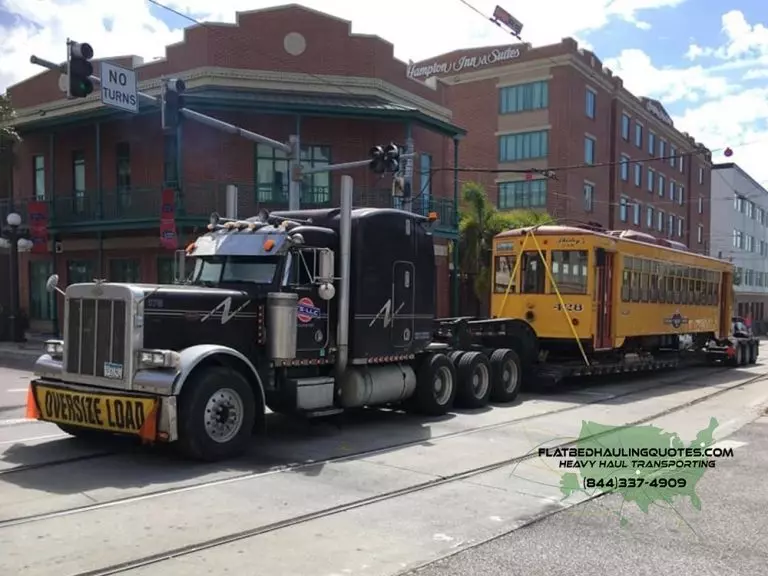Expert Strategies for Transporting Oversized Loads
It is important to determine if your load is oversized before you hire a heavy haulers. If you have oversized cargo, you must comply with state and federal regulations. The most accurate way to assess the size of your load is to measure its total dimensions – length, width, and height – as well as its weight. This information will be vital for communication with an oversized load hauler, who will provide necessary permits, signs, and flags required in order to safely transport oversized loads across state or country lines. Knowing the exact size of your oversized load upfront helps make sure you save time and money on hefty fines or legal repercussions that often come with transporting loads without proper clearance.
Transporting oversized loads on heavy haul trucking can be a difficult challenge for truckers, but it doesn’t have to be. With the right planning and an understanding of the regulations in place, it can actually be a relatively simple process. In this blog post, we will discuss expert strategies for transporting oversized loads from experienced hauling professionals that you can use to make your next heavy haul go smoothly.

What are Oversize Loads?
Oversize loads are shipments that exceed typically accepted size and weight limits for standard truckloads. Certain states have specific rules governing oversize loads on their roads, including permit requirements and route restrictions. These limits can vary from state to state, so it is important to research any restrictions before beginning your journey with an oversize load. Additionally, some states require specific equipment such as wide-load flags or escort vehicles for certain loads due to their size or weight.
How To Get Permits For Your Freight
Before transporting an oversized load, you must obtain the necessary permits from each state you plan to pass through. Each state has different laws regarding permitting; some may require special forms or deposits while others do not. It is important to understand all of the requirements in advance in order to avoid delays or fines while on the road. Additionally, many states have designated routes that must be followed when transporting oversized loads; these routes ensure that bridges and other structures along your path are able to support your load’s weight without damage or danger. A good general starting point is obtaining an annual permit from whichever state has the most stringent regulations; this generally allows transit through multiple states without needing additional permits for each one.
Top Tips To Help Carriers With Heavy Hauling
Transporting oversized loads can be a daunting task if done incorrectly; however, there are several tips that experienced haulers use to make sure their jobs go smoothly:
• Research laws & regulations: It is essential that carriers understand all of the laws and regulations associated with their cargo before they begin hauling it; this ensures legal compliance and helps prevent any potential risks along their route.
• Plan ahead: Proper preparation is key when dealing with large shipments; carriers should plan out their route in advance and account for any potential obstacles along the way (low clearance bridges, traffic congestion etc.). This will help them arrive at their destination safely and on time!
• Check weather conditions: Before setting out on a long journey with an oversize load, carriers should always check weather forecasts throughout their route so that they know what conditions they might encounter ahead of time (heavy rain or strong winds could present serious hazards). Additionally, professional drivers often use GPS tracking devices so that they can monitor real-time road conditions as well as traffic congestion or accidents which could affect their progress during transit.
• Use caution when turning/passing other trucks/cars: When operating a vehicle carrying an oversize load, extra caution must be taken while passing other vehicles or making turns as these maneuvers require much more space than typical driving due to increased turning radius needed by commercial vehicles carrying larger loads. Additionally, drivers should take advantage of rest stops whenever possible in order to reduce fatigue caused by long hours behind the wheel while ensuring safe operation of the vehicle at all times.
Moving oversized loads safely and efficiently requires detailed planning before setting out on any journey – luckily there are plenty of resources available online (such as those offered through Heavy Haul Transporting) that provide helpful tips from experienced professionals who understand how best to transport large shipments across various regions within North America safely and effectively! If you’re ready for assistance in getting your next heavy haul job done right – visit us today at Heavy Haul Transporting To see how we can help make sure your freight moves swiftly without putting anyone else’s safety at risk!
